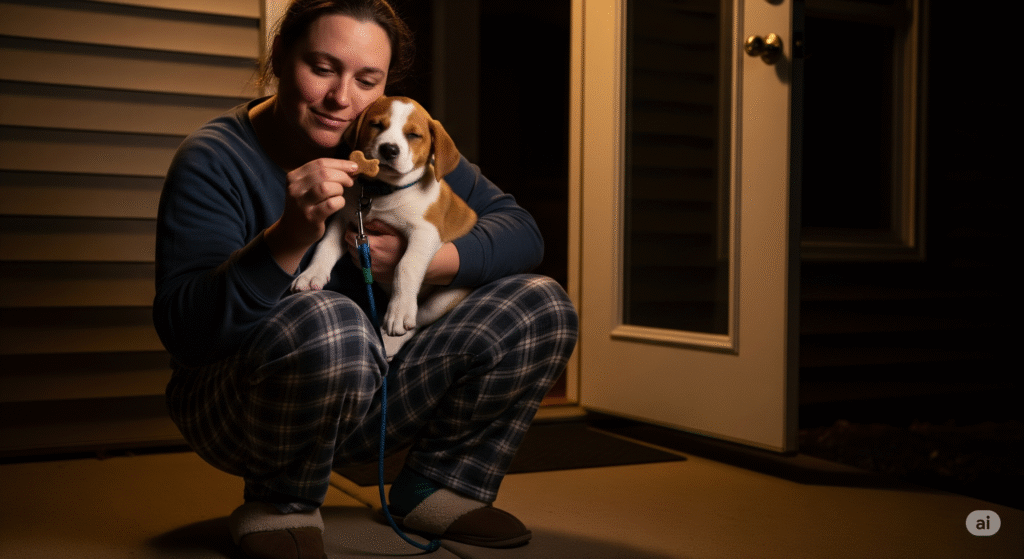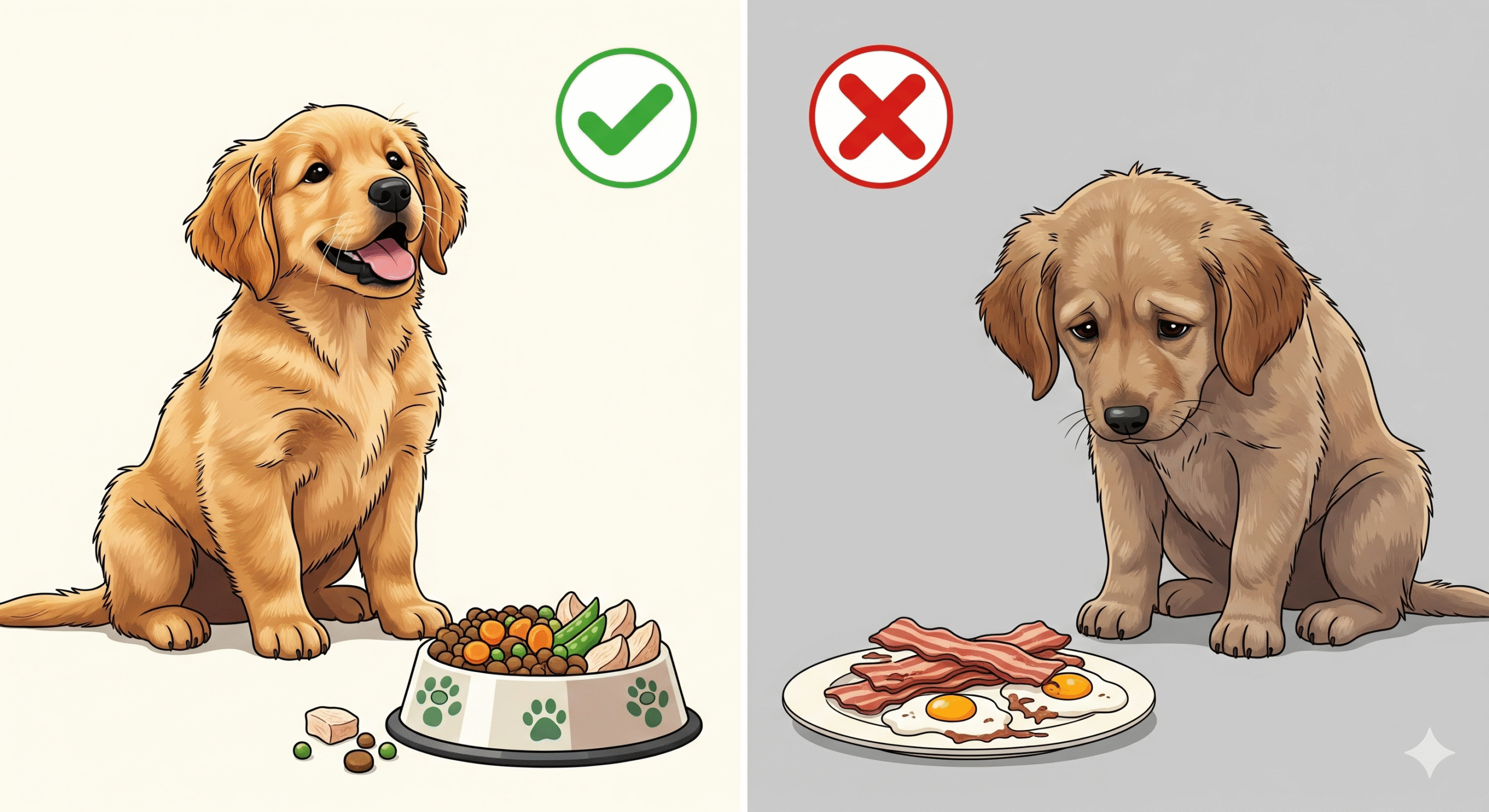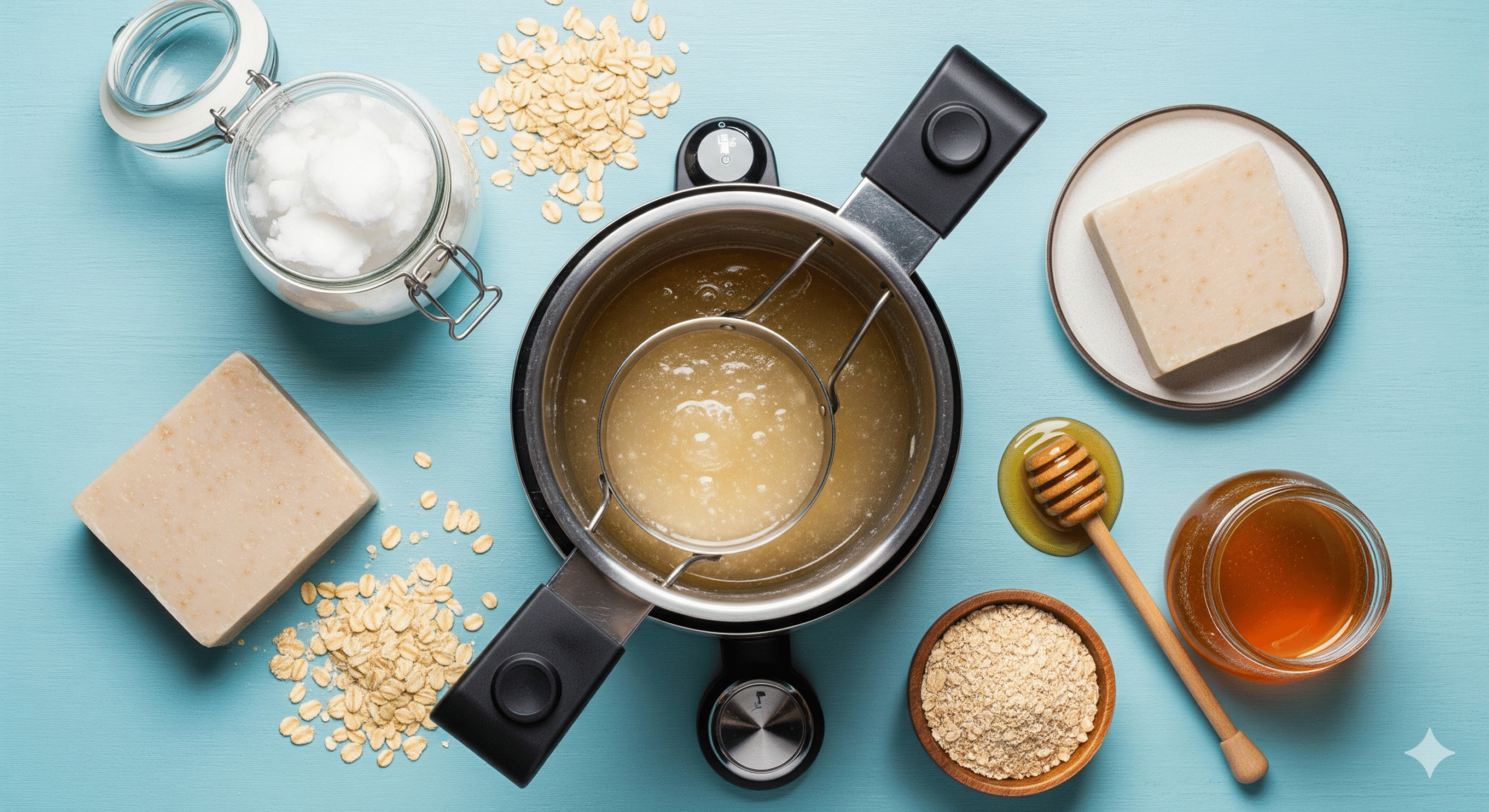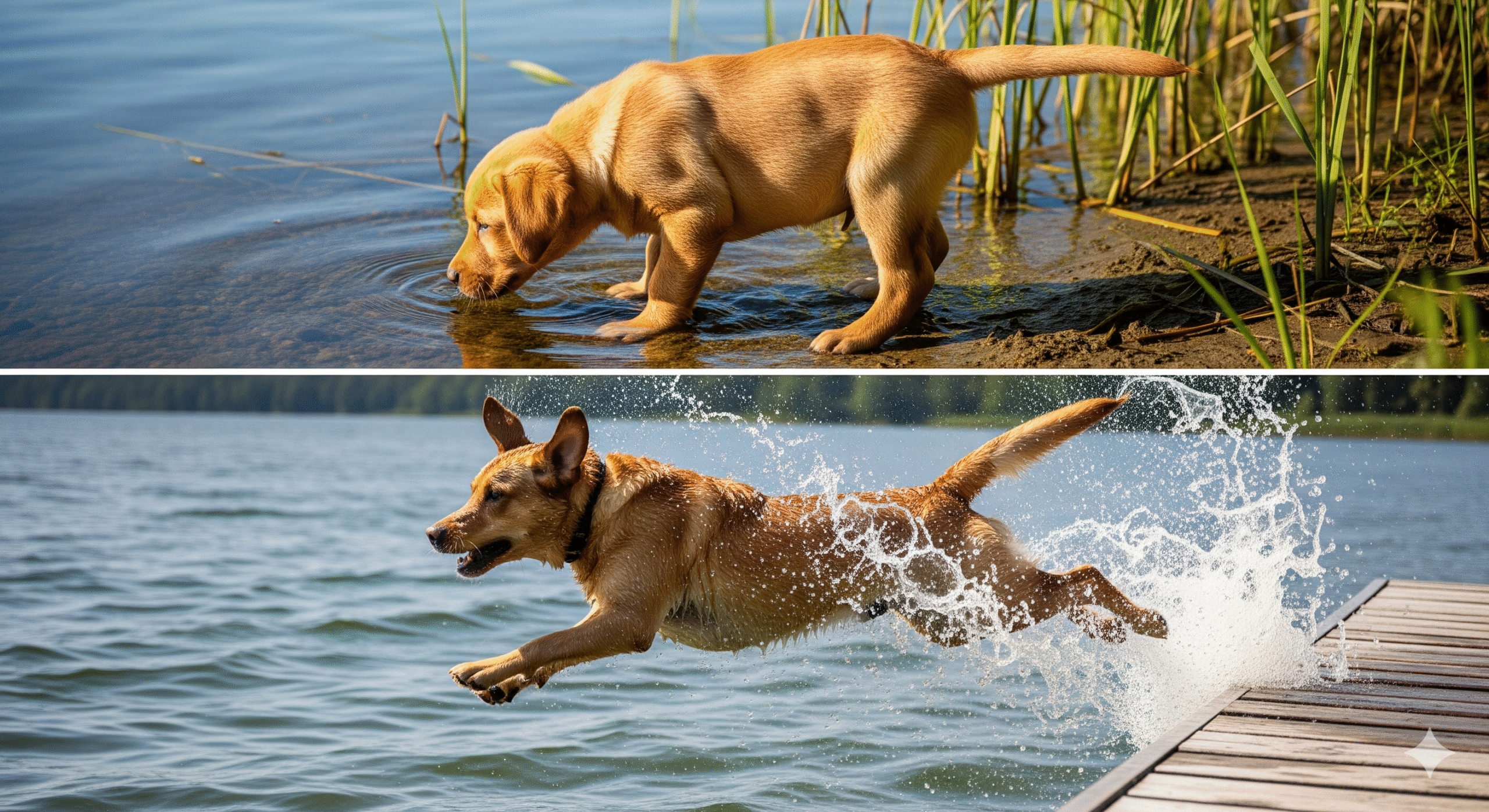Waking up to a wet crate and a sad puppy is a frustrating rite of passage for every new dog owner. While daytime accidents decrease, nighttime potty training often feels like a relentless battle. The good news? With a solid, consistent plan, you can conquer midnight accidents and finally get a full night’s sleep.
This definitive guide will provide you with:
✔️ The biological reason puppies can’t hold it all night (and when they can)
✔️ A step-by-step routine for dry nights
✔️ Proven crate training techniques that actually work
✔️ Troubleshooting tips for when things go wrong
Let’s transform those long nights into peaceful slumber for both you and your pup.
Why Do Puppies Have Accidents at Night? 🧬
Understanding the “why” is the first step to solving the problem. It’s not stubbornness; it’s science and development.
1. Tiny Bladder, Limited Capacity 🤏
A puppy’s bladder is incredibly small. A general rule of thumb is that a puppy can hold their bladder for one hour for every month of age, plus one. This means:
- 8-week-old (2-month) puppy: 3 hours max
- 12-week-old (3-month) puppy: 4 hours max
- 4-month-old puppy: 5 hours max
Expecting an 8-week-old puppy to last 8 hours is simply biologically impossible.
2. Lack of Bladder Control 🧠
The muscles that control the bladder sphincter are underdeveloped in young puppies. They literally don’t have the physical ability to “hold it” for long periods, especially when they are in a deep sleep.
3. The Sleep Factor 😴
Puppies sleep very deeply. Sometimes, they don’t even wake up to the signal that they need to go. They simply release in their sleep, waking up confused and uncomfortable.
The Ultimate Nighttime Potty Training Routine 🛌➡️🌳
Consistency is everything. Follow this routine every single night to create clear expectations for your puppy.
Step 1: The Pre-Bedtime Power Down (8:00 PM – 10:00 PM) 📵
The hour before bed should be calm and predictable.
- Cut off food and water about 2-3 hours before bedtime. This is crucial. Place the water bowl up where the puppy can’t reach it.
- Offer one last sip of water right before the final potty break, but don’t let them guzzle.
- Engage in calm play, like chewing on a toy or gentle petting. Avoid rowdy games that get their heart rate up.
Step 2: The Final Potty Break (10:30 PM) 🚦
This isn’t a quick pee in the yard. Make it count.
- Take your puppy to their designated potty spot on a leash.
- Use a command like “Go Potty” or “Do Your Business.”
- Stay silent and still. Don’t play or distract them. Let them sniff and find the perfect spot.
- Wait patiently. This break might take 5-10 minutes. You are waiting for both #1 and #2.
- Praise calmly and reward with a high-value treat immediately after they finish.
Step 3: Overnight Strategy: To Wake or Not to Wake? ⏰
Do you set an alarm or wait for them to cry? The answer depends on age.
- For Puppies 8-14 Weeks: SET AN ALARM. Don’t wait for them to cry. Crying in the crate can become a habit. Instead, set an alarm for 2-3 hours after bedtime.
- For Puppies 4+ Months: You can often wait for them to signal. They may whine, scratch, or bark once to let you know.
The Midnight Potty Trip Rules:
- Stay boring. No talking, no playing. This is a business trip.
- Leash them and go directly to the potty spot.
- Praise and treat for going, then go directly back inside to the crate.
- No fuss. Tuck them back in and go back to bed yourself.
How to Use a Crate for Nighttime Success 🏠
A crate is your #1 tool for nighttime potty training. Used correctly, it taps into a dog’s natural instinct not to soil their den.
Crate Setup for Success
- Right Size: The crate should be just big enough for your puppy to stand up, turn around, and lie down comfortably. If it’s too big, they will use one corner as a bathroom. Use a divider panel for large crates.
- Comfortable, Not Cozy: Place a soft mat or towel down. Avoid plush, absorbent beds that can feel like a pee pad to a puppy.
- Location: Place the crate right next to your bed, at arm’s reach. This allows you to hear your puppy stir and reassures them that they are not alone, reducing anxiety-based whining.
What to Do If You Find an Accident in the Crate
- Stay calm. Do not yell or punish your puppy. They cannot connect your anger to something that happened minutes ago.
- Clean it thoroughly. Use an enzyme-based cleaner like Nature’s Miracle or Rocco & Roxie. Regular cleaners leave a scent that encourages re-soiling.
- Wash the bedding. Any residual smell will make them think it’s an okay place to go.
Troubleshooting Common Nighttime Problems 🛠️
Problem: My Puppy Cries Constantly in the Crate
- Solution: Ensure the crate is a positive place with treats and meals. If the crying is constant and panicked, they may have separation anxiety, which requires a different approach. First, make sure they don’t actually need to go out by taking them on a boring potty break.
Problem: My Puppy Goes Potty But Doesn’t Signal
- Solution: Go back to setting an alarm and beating them to it. They are likely going in their sleep. You need to get them outside before the accident happens.
Problem: They Go Potty Outside But Then Have an Accident Right After Coming In
- Solution: You are likely ending the potty break too soon. Stay outside for a full 10-15 minutes to ensure they are completely empty.
When Will My Puppy Sleep Through the Night? 📅
This is the million-dollar question. Here’s a general timeline based on age:
| Puppy Age | Expected Nightly Routine | Goal |
|---|---|---|
| 8-10 weeks | 2-3 potty breaks per night | Manage expectations, prevent accidents |
| 12-16 weeks | 1-2 potty breaks per night | Stretching the time between breaks |
| 4-6 months | 0-1 potty breaks per night | Sleeping through the night! |
| 6-7+ months | 0 potty breaks | Fully bladder-trained |
Most puppies can consistently sleep through the night (7-8 hours) without a potty break by 4-6 months of age.
Ready to reclaim your sleep? 🛌✨

This age is also known for testing boundaries. You might see new behaviors like chewing on forbidden items or ignoring commands they once knew. This defiance can even extend to their bathroom habits.
If your previously well-trained pup suddenly starts having accidents again, you’re not alone. For a deep dive into this specific challenge and how to overcome it, read our complete guide on Puppy Potty Training Regression: Why It Happens & Fixes.”
View the Full Guide





